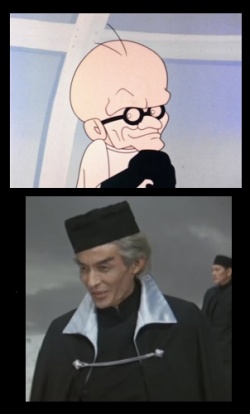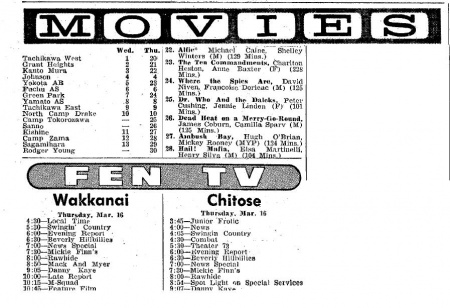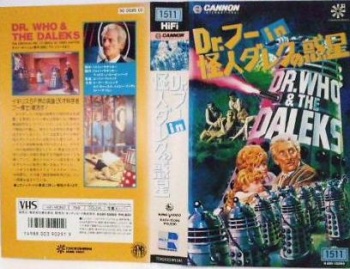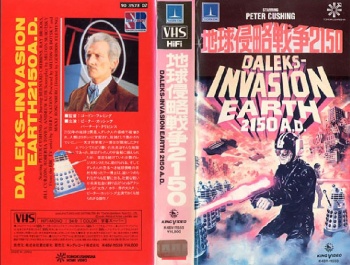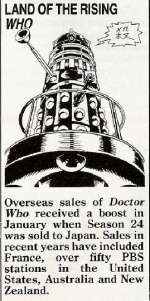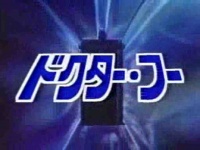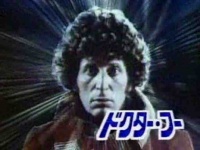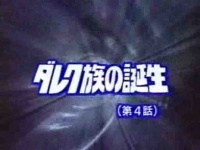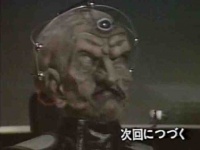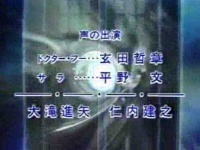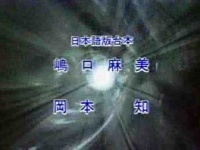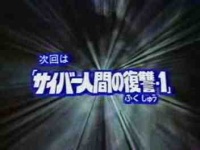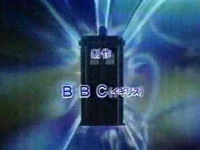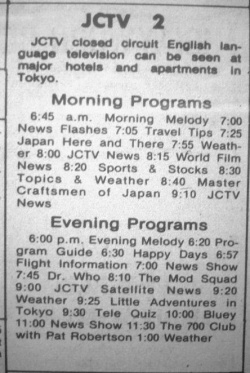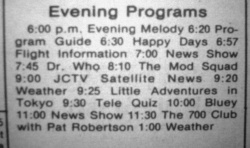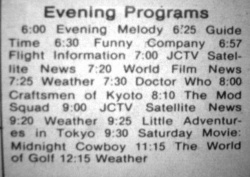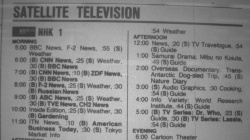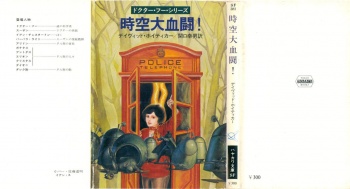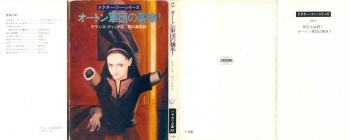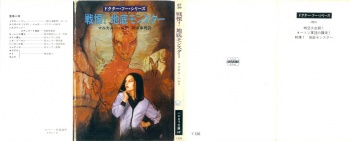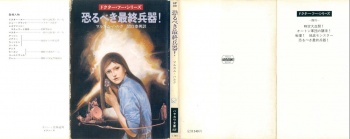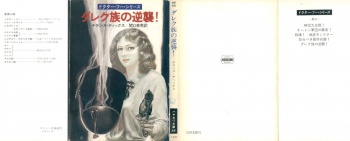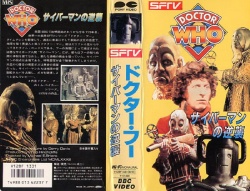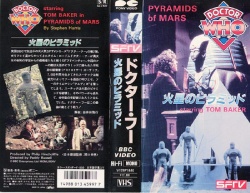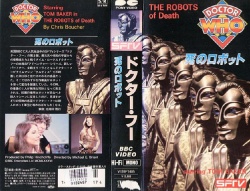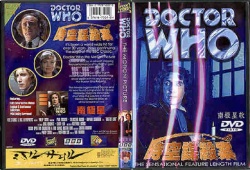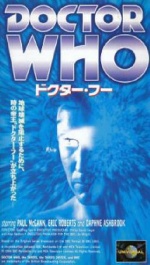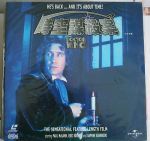Japan
JAPAN is an island nation off the east coast of China.
Profile
| Country Number (48?) | 1978 | SECOND and THIRD WAVE |
| Region | Asia | |
| Television commenced | 1951 | |
| Colour System | 1960 | NTSC |
| Population | 1978 | 111 million |
| TV Sets | 1978 | 27 million |
| Language/s | English | Japanese (Bilingual) |
Television Stations / Channels
Japan began its television service in 1951. Colour transmissions began in 1960 using the NTSC colour broadcast system.
The main national broadcaster in Japan is Nippon Hoho Kyokai (NHK).
The country is also served by over a hundred privately owned terrestrial, satellite and cable television stations.
Doctor Who aired on private cable networks and NHK.
Tom Baker stories (in English) also aired in Japan on the Armed Forces Network in 1986 – see the separate profile for that cable station.
Language/s
The principal language is Japanese; although a lot of the television aired in English, especially broadcasts on cable channels.
The newspapers we accessed stated that "all foreign TV and feature films are dubbed in Japanese unless stated otherwise". Doctor Who was marked as being in English or "bilingual".
DOCTOR WHO IN JAPAN
(ドクター・フー )
Japan was the 48th country to screen Doctor Who (see Selling Doctor Who).
In Japanese script, the programme is called ドクター・フー
KING KONG / KING KONG ESCAPES
- From late 1965 and throughout 1966, the US/Japanese animated Saturday morning show "King Kong / The King Kong Show" went into production. (The first episodes went on air in the US from September 1966 and ran until August 1969.) A recurring villain of the animated series was the mad scientist "Dr Who". (Did the producers come up with the name themselves, or had they "borrowed" it having seen some of the promotional material that had by then been published about the BBC's series?)
- The script for a live action version of the cartoon series had also been written, but was replaced by a different idea, which became "Kingu Kongu no Gyakushū / King Kong Escapes", a Japanese/American co-production from Toho and Rankin/Bass, released in Japan in July 1967 and the US in June 1968. As in the cartoon, the lead villain was named "Dr Who" (played by Eisei Amamoto) who wore a costume that did in fact have a very close similarity to that worn by William Hartnell! (Again, coincidence, or was the idea "borrowed" from the BBC series?)
- For further reading about the animated show and movie, see:
DALEK MOVIES
PETER CUSHING Movies
We assume that the two Peter Cushing Dalek movies were released theatrically and dubbed into Japanese in the 1960s.
The film did play in English at the Tokorozawa US military camp in March 1967.
Both films were later released on home video in Japan. As far as we can determine, the first film was fully dubbed into Japanese but the second was only subtitled.
- 怪人ダレクの惑星 (which translates as Phantom Planet of the Daleks, although Forbidden Planet Frankenstein has also been cited)
- 地球侵略戦争2150 (War Invasion Against Earth 2150)
BBC Records
The 26 April 1966 edition of The Daily Mirror reported that, with the popularity of Doctor Who spreading across the globe, the BBC was dubbing the series into Japanese (see Peter Haining's The Key to Time, page 48). However, there is no evidence that the series aired in Japan in the 1960s.
The Eighties - THE LOST CHAPTERS records a sale of "(3)" stories (by 10 February 1987).
In DWM, Japan is identified in only one story Archives: EEE, with a sale dated as being 1978.
Other BBC documents indicate the stories bought were BBB, CCC and EEE.
Indeed, the fact that 18 episodes aired in 1978 supports this.
In the Gallifrey Guardian news page of DWM issue #147 (April 1989), a brief announcement with the heading "LAND OF THE RISING WHO" reported that "Overseas sales of Doctor Who received a boost in January when Season 24 was sold to Japan". In the caption, the Dalek is saying "殺", which is "Satsu", meaning "to kill".
Stories bought and broadcast
JON PERTWEE
Three stories, 18 episodes:
| BBB | Doctor Who and the Silurians | 7 |
| CCC | The Ambassadors of Death | 7 |
| EEE | Terror of the Autons | 4 |
Japan therefore bought part from GROUP B and C of the Jon Pertwee stories.
The programme was supplied as NTSC colour video tapes with English soundtracks.
SYLVESTER McCOY
Four stories, 14 episodes:
| 7D | Time and the Rani | 4 |
| 7E | Paradise Towers | 4 |
| 7F | Delta and the Bannermen | 3 |
| 7G | Dragonfire | 3 |
Japan therefore bought GROUP A of the Sylvester McCoy stories.
The programme was supplied as NTSC colour video tapes in English but most likely also dubbed into Japanese to enable bilingual broadcasts in both languages.
TOM BAKER
Unknown (five?) stories, 22 episodes:
| 4A | Robot | 4 | ||
| 4E | Genesis of the Daleks | ダレク族の誕生 | (Birth of the Daleks) | 6 |
| 4D | Revenge of the Cybermen | サイバ人間の復讐 | (Cybermen's Revenge) | 4 |
| unidentified | 8 |
Japan therefore bought GROUP ONE and GROUP TWO of the Tom Baker stories. (The two unidentified 4-parters were probably The Ark in Space and Terror of the Zygons.)
The programme was supplied as NTSC colour video tapes in English but dubbed into Japanese to enable bilingual broadcasts in both languages.
New sound effects were added, and new rather jaunty music was added, replacing the Dudley Simpson original score.
The Japanese translations were written by Shimaguchi Asami and Okamoto Tomo (who are identified by an on-screen caption).
The actors who dubbed the lead voices were:
(Incidentally, Fumi Herano later also dubbed for Elisabeth Sladen in the Japanese dubs for the New Series episode School Reunion!)
(As we've noted elsewhere, a run of Tom Baker stories in English also aired on the American Armed Forces Network in Japan in 1986.)
PAUL McGANN
One movie:
| TVM | The TV Movie | 1 |
Transmission
JON PERTWEE
18 episodes aired on JCTV-2 (Japan Cable Television Limited, established in 1971: JCTV-JAPAN), which was a closed circuit English language television service that could be seen at major hotels and apartments in Tokyo only.
This run of episodes commenced on Friday, 3 March 1978, at 7.45pm, running on a weekly basis. From the sixth episode onwards, the series shifted to Saturdays, at 7.30pm. The run ended on 24 June 1978.
TOM BAKER
Fifteen years later, Doctor Who returned to Japan television, now on the national broadcaster, Nippon Hoso Kyokai's satellite channel BS11 NHK 2.
From Tuesday, 1 June 1993, aired a run of 22 episodes, screening weekdays, at 5.00pm. There was a one week break on 9 June to allow for coverage of the Japanese Royal Wedding (ROYAL WEDDING). The run ended on Thursday, 1 July 1993.
These episodes were mainly from Tom Baker's first two seasons: three of the stories were Robot, Genesis of the Daleks and Revenge of the Cybermen.
Each episode ended with an on-screen caption "次回につづく", which is "Continues next time". And on the final episode of each serial, another caption appeared with the title of the next serial.
|
Robot part 1 in Japanese |
(Clips from the Japanese dub of Genesis of the Daleks part six had also been available on YouTube, but have since been removed due to copyright issues...)
In Japanese, Genesis of the Daleks was called "ダレク族の誕生", which translates as "Birth of the Tribe Dareku".
(An earlier run of Tom Baker stories was broadcast in Japan in 1986 by the Armed Forces Network – see the separate profile page for those English broadcasts.)
SYLVESTER McCOY?
A few weeks later, a 14 week run commenced on Tuesday, 20 July 1993, airing weekdays at 5.00pm. The final episode screened on Friday, 6 August 1993.
Given that this run consisted of 14 episodes, this was probably season 24, the first year of the seventh Doctor, played by Sylvester McCoy. (Although DWM reported the sale of these stories was back in January 1989, we could not find any additional airdates at all for Doctor Who between 1989 and 1993, which suggests that season 24 had been held over for four years.)
Alternatively, was this 14 week block a run of further Tom Baker stories, continuing on from where the previous run left off?
There is no clear record that Japan screened classic Doctor Who again.
PAUL McGANN
The TV Movie aired on a NHK channel in 1997.
TARDIS Sound Effects
In the late 1970s, the BBC released various sound effects packages to international broadcasters and studios. The TARDIS sound effect was used in various entries of the Super Sentai franchise produced by Toei Company (established in 1975); the sounds appeared in Battle Fever J (1979) and Denji Sentai Megaranger (1997, which was adapted into Power Rangers In Space in 1998)!
|
|
TV listings
| ← AIRDATES ...... (CLICK ICON TO GO TO TABLE SHOWING EPISODE BREAKDOWN AND AIRDATES - N/S = story title is Not Stated) |
TV listings have been obtained from Japan Times, an English-language newspaper.
For the 1978 run, the series was listed as "Dr Who" for the 7.45pm episodes, then "Doctor Who" for the 7.30pm episodes. No story titles were given.
For the 1993 screenings, the series was listed as "(B) TV Series: Dr Who", with the (B) tag indicating a bilingual broadcast. The timeslot given for the first run was only 23 minutes; for the second, it was a full 30 minutes.
The paper stated that "All foreign TV and feature movies are dubbed into Japanese unless stated otherwise."
Novelisations
Five of the Target Doctor Who novelisations were translated into Japanese, and released by Hayakawa Publishing Inc in 1980:
- 時空大血闘! / Jikuu Dai Chi Tataka! (Space-Time Big Bloody Battle! or The Big Bloody Battle in Space-time!) (The Daleks)
- オートン軍団の襲来! / Oo-ton Gundan-no Shuurai (The Auton Army Invasion) (Spearhead from Space)
- 戦慄! 地底モンスター / Senritsu! Chitei Monsutaa (Shuddering! The Underground Monsters or The Terrifying Underground Monsters) (Doctor Who and the Silurians)
- 恐るべき最終兵器! / Kowaru Beki Saishyuu Heiki! (Be Fearful of the Ultimate Weapon! / You Should be Scared of the Ultimate Weapon) (The Doomsday Weapon / Colony in Space)
- ダレク族の逆襲! / Dareku Joku-no Gyakushyuu! (The Dalek Race's Counterattack!) (Day of the Daleks)
The book covers feature a black banner, which says DOCTOR WHO SERIES, then the title, under which is the name of the author and the translator.
The books are adorned with fold-out dust-jackets, which list the main cast of characters on the inside cover flap.
VIDEO and DVD
Three Tom Baker adventures were also released on home video in the late 1980s; these were published by Pony Video, and had Japanese subtitles rather than being dubbed.
- サイバーメンの復讐 / Saibaman-no Gyakushyuu (The Cyberman's Counterattack, or The Counterattack of the Cybermen) (Revenge of the Cybermen) (1983) [which is a slight variation on the title used for the 1993 broadcast]
- 火星のピラミッド / Kasei-no Piramiddo (Mars' Pyramids) (Pyramids of Mars) (1985)
- 死のロボット / Shi-no Robotto (Death's Robots) (The Robots of Death) (1986)
The Paul McGann TV Movie – with the title "DOCTOR WHO – THE MOTION PICTURE" was released on video, DVD and laser-disc. It is believed that the DVD may have been a Hong Kong release, which included Japanese subtitling as an option. Likewise, the laser-disc cover shown here is a Hong Kong / Chinese printing, but with Japanese subtitles.
CLIP: REVENGE OF THE CYBERMEN - subtitled
Websites
We are grateful to the following sites for the information about Japanese book and video merchandise:
- TARDIS HASSHIN – DOCTOR WHO IN JAPAN
- JAPAN VIDEOS
- JAPAN NOVELS
- JAPAN – OTHER DR WHO STUFF
- WIKIPEDIA IN JAPANESE
Japan in Doctor Who
- There is a T-Mat terminal in Tokyo (The Seeds of Death)
- Tokyo is mentioned in The Ambassadors of Death
- New Tokio is named in Frontier in Space
- Harrison Chase is critical of the Japanese artistic practice of bonsai (The Seeds of Doom)
- The Doctor is menaced by an armoured samurai warrior in the Matrix dreamscape (The Deadly Assassin)
- The Japanese are said to have a monopoly in electronics (Image of the Fendahl)
